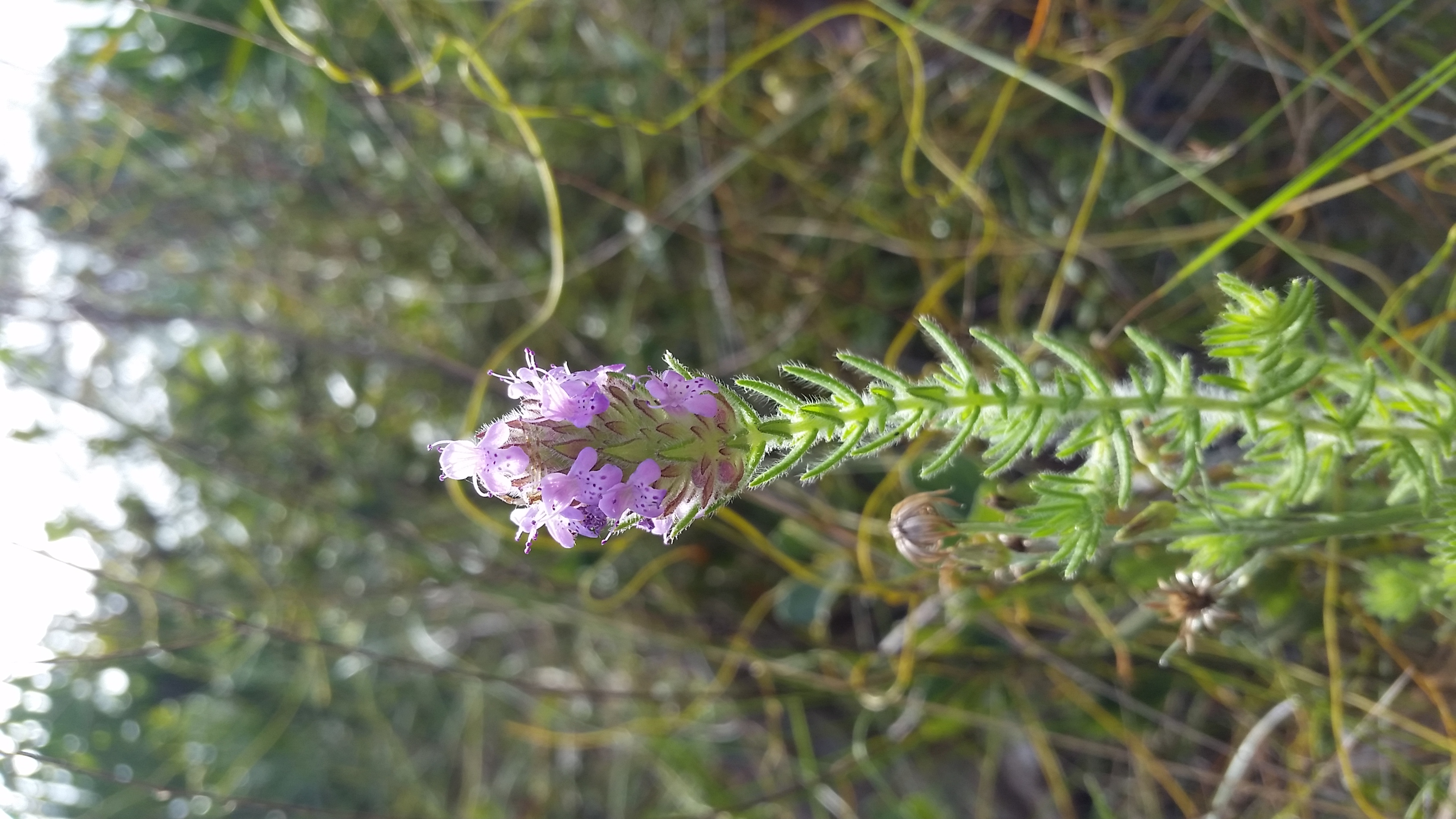Piloblephis rigida
| Piloblephis rigida | |
|---|---|

| |
| Photo taken by Michelle Smith at Jonathan Dickinson State Park | |
| Scientific classification | |
| Kingdom: | Plantae |
| Division: | Magnoliophyta - Flowering plants |
| Class: | Magnoliopsida – Dicotyledons |
| Order: | Lamiales |
| Family: | Lamiaceae ⁄ Labiatae |
| Genus: | Piloblephis |
| Species: | P. rigida |
| Binomial name | |
| Piloblephis rigida (W. Bartram ex Benth.) Raf. | |

| |
| Natural range of Piloblephis rigida from USDA NRCS Plants Database. | |
Common names: Wild pennyroyal, Florida pennyroyal[1]
Contents
Taxonomic notes
Synonyms: Pycnothymus rigidus (Bartram ex Bentham) Small; Satureja rigida Bartram ex Bentham.[1]
Varieties: none.[1]
This is the only species in the genus Piloblephis.[2] In Greek, Pilo is hairy and belphis is eyelid, this refers to the hairs on the flower. The name rigida refers to the stiff branches.[3]
Description
This is a short lived perennial species with thin woody stems and needle-like leaves that give off a pennyroyal smell when crushed.[4] The 2-lipped flowers are purple with dark purple spots on the lower tips, arranged in dense, showy clusters.[2]
Distribution
Piloblephis rigida is endemic to the longleaf pine range[5] from peninsular Florida, some counties in Georgia, and a few western Bahamas islands.[3]
The Piloblephis genera is endemic to the longleaf pine range from southeastern Virginia to central Florida and west to southeast Texas.[6]
Ecology
Habitat
It can be found in well drained sunny locations, that include pine flatwoods, sandhills, and xeric oak/saw palmetto scrubs.[4][7] Associated species include oaks and saw palmetto.
Phenology
Seen flowering late December 2015 at Jonathan Dickinson State Park on the Kitching Creek Trail by Michelle Smith; very abundant.
Pollination
Piloblephis rigida has been observed at the Archbold Biological Station to host sweat bees from the Halictidae family such as Agapostemon splendens, Augochlorella aurata, Lasioglossum miniatulus and L. nymphalis, leafcutting bees from the Megachilidae family such as Megachile brevis pseudobrevis, and thread-waisted wasps from the Sphecidae family such as Oxybelus laetus fulvipes.[8]
Conservation, cultivation, and restoration
Cultural use
The Miccosukee and Seminole Indians made tea and flavored soups and used it to repel insects.[3]
Photo Gallery
References and notes
- ↑ 1.0 1.1 1.2 Weakley, A.S. 2015. Flora of the southern and mid-atlantic states. Working Draft of 21 May 2015. University of North Carolina at Chapel Hill, Chapel Hill, North Carolina.
- ↑ 2.0 2.1 [[1]]Florida Wildflower Foundation. Accessed: February 20, 2016
- ↑ 3.0 3.1 3.2 [[2]]Eat the Weeds. Accessed: February 20, 2016
- ↑ 4.0 4.1 [[3]] Native Florida Wildflowers. Accessed: February 20, 2016
- ↑ Sorrie, B. A. and A. S. Weakley 2001. Coastal Plain valcular plant endemics: Phytogeographic patterns. Castanea 66: 50-82.
- ↑ Sorrie, B. A. and A. S. Weakley 2001. Coastal Plain valcular plant endemics: Phytogeographic patterns. Castanea 66: 50-82.
- ↑ Florida State University Robert K. Godfrey Herbarium database. URL: http://herbarium.bio.fsu.edu. Last accessed: October 2015. Collectors: Cecil R. Slaughter. States and Counties: Florida: Osceola. Compiled by Tall Timbers Research Station and Land Conservancy.
- ↑ Deyrup, M.A. and N.D. 2015. Database of observations of Hymenoptera visitations to flowers of plants on Archbold Biological Station, Florida, USA.